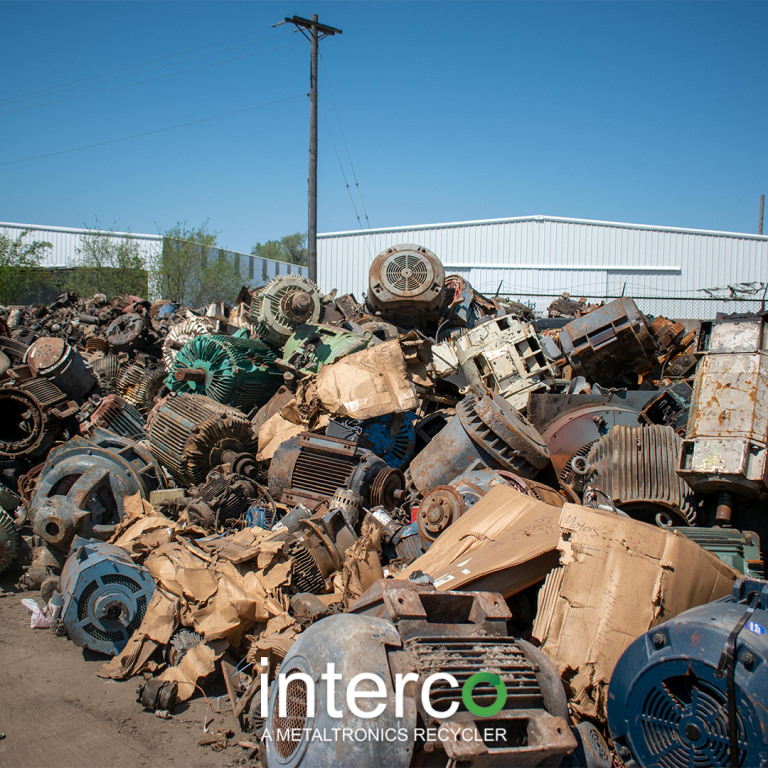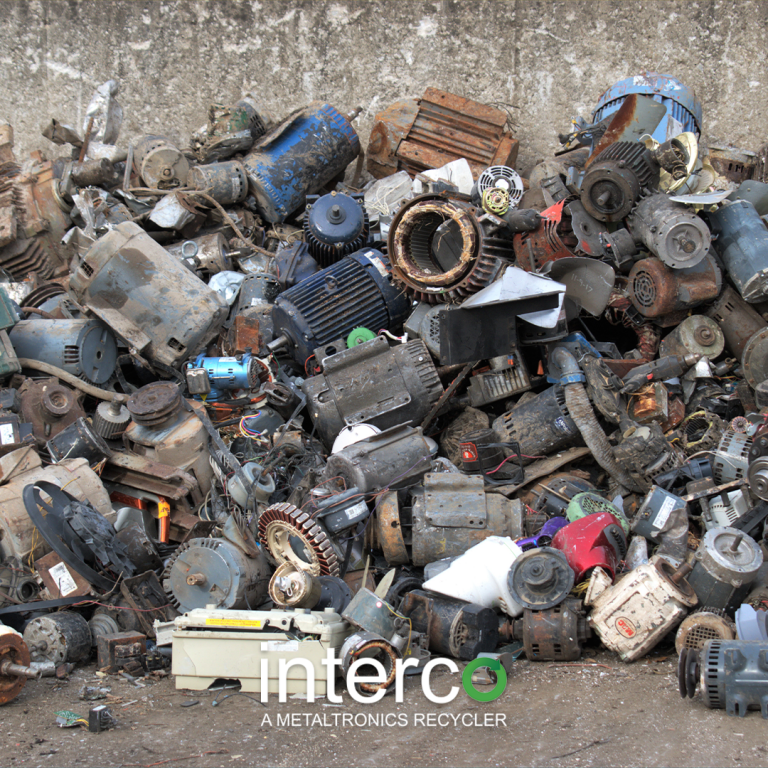Scrap electric motors disposal services play a pivotal role in safeguarding our environment and ensuring the sustainable disposal of these essential components. Improper disposal can lead to severe environmental consequences, emphasizing the significance of adopting responsible practices.
This comprehensive guide delves into the various types of scrap electric motors, disposal methods, regulations, best practices, and emerging technologies in the field, empowering you with the knowledge and tools to contribute to a greener future.
Scrap Electric Motors Disposal Services Overview
Electric motors are an essential part of our modern world, powering everything from household appliances to industrial machinery. However, when these motors reach the end of their lifespan, they can pose a significant environmental hazard if not disposed of properly.Improper
disposal of electric motors can lead to the release of hazardous materials into the environment, including lead, mercury, and cadmium. These materials can contaminate soil and water, and can have a detrimental impact on human health and wildlife.
Types of Scrap Electric Motors
Electric motors come in a variety of types, each with its own unique characteristics and applications. Understanding the different types of scrap electric motors is crucial for efficient disposal and recycling processes.
The most common types of scrap electric motors include AC motors, DC motors, and brushless motors. Let’s delve into each type and its specific attributes:
AC Motors
- Alternating Current (AC) motors are powered by alternating current, which changes direction periodically.
- They are widely used in industrial and commercial applications, such as pumps, fans, and compressors.
- AC motors are known for their high efficiency, reliability, and ability to operate at various speeds.
DC Motors
- Direct Current (DC) motors are powered by direct current, which flows in one direction.
- They are commonly found in smaller appliances, such as power tools, vacuum cleaners, and electric vehicles.
- DC motors offer precise speed control and high torque at low speeds.
Brushless Motors
- Brushless motors are a type of AC motor that uses electronic commutation instead of mechanical brushes.
- They are highly efficient, reliable, and require minimal maintenance.
- Brushless motors are often used in high-performance applications, such as robotics, electric vehicles, and drones.
Disposal Methods for Scrap Electric Motors: Scrap Electric Motors Disposal Services

When disposing of scrap electric motors, several methods can be employed, each with its own set of advantages and drawbacks. Understanding these methods empowers individuals and organizations to make informed decisions that align with environmental sustainability and responsible waste management practices.
The primary disposal methods for scrap electric motors include recycling, landfilling, and incineration. Each of these methods offers unique benefits and challenges, and the choice of the most appropriate method depends on factors such as environmental regulations, available resources, and the specific characteristics of the motors being disposed of.
Recycling, Scrap electric motors disposal services
Recycling scrap electric motors involves dismantling the motors and recovering valuable materials, such as copper, aluminum, and steel, for reuse in the manufacturing of new products. This method is highly advantageous as it conserves natural resources, reduces greenhouse gas emissions associated with extracting and processing raw materials, and minimizes the amount of waste sent to landfills.
However, recycling scrap electric motors can be a complex and labor-intensive process, and the availability of recycling facilities may vary depending on the region. Additionally, certain components of electric motors, such as capacitors and batteries, may require specialized handling and disposal methods due to their hazardous nature.
Landfilling
Landfilling involves disposing of scrap electric motors in designated landfills, where they are buried and isolated from the environment. This method is relatively inexpensive and widely accessible, making it a common option for disposing of large quantities of waste. However, landfilling can pose environmental risks, as the decomposition of organic materials in the motors can generate methane, a potent greenhouse gas.
Furthermore, landfilling can contribute to soil and groundwater contamination if the landfill is not properly managed. In some cases, regulations may prohibit the landfilling of certain types of electric motors due to the presence of hazardous materials.
Incineration
Incineration involves burning scrap electric motors at high temperatures to reduce their volume and destroy organic materials. This method can effectively reduce the amount of waste sent to landfills and generate energy that can be used to power facilities or heat homes.
However, incineration can release harmful pollutants into the atmosphere, including dioxins, furans, and heavy metals. Additionally, the incineration of electric motors may require specialized equipment and expertise to ensure proper combustion and minimize emissions.
Regulations and Standards for Scrap Electric Motor Disposal
The disposal of scrap electric motors is governed by various regulations and standards aimed at ensuring proper and environmentally sound practices. Adhering to these guidelines is crucial to protect human health and the environment from the potential hazards associated with improper disposal.
Environmental Protection Laws
- Resource Conservation and Recovery Act (RCRA):Classifies scrap electric motors as hazardous waste due to the presence of hazardous materials such as lead, copper, and insulation. Proper disposal methods must be followed to prevent contamination of soil, water, and air.
- Toxic Substances Control Act (TSCA):Regulates the disposal of polychlorinated biphenyls (PCBs), which are found in older electric motors. Special handling and disposal procedures are required to prevent environmental contamination.
Industry Standards
- Institute of Scrap Recycling Industries (ISRI):Provides guidelines for the safe and responsible recycling of scrap electric motors, including proper handling, storage, and disposal methods.
- National Electrical Manufacturers Association (NEMA):Establishes standards for the design and disposal of electric motors, including requirements for the removal of hazardous materials and the use of environmentally friendly materials.
Best Practices for Scrap Electric Motor Disposal

Ensuring responsible and eco-friendly scrap electric motor disposal is crucial. Best practices guide us in handling, storing, and transporting these materials safely, minimizing environmental impact and maximizing resource recovery.
Partnering with reputable and licensed disposal companies is essential. Their expertise and adherence to regulations guarantee proper handling and recycling, preventing illegal dumping or unsafe disposal practices.
Proper Storage and Handling
- Store motors in designated, well-ventilated areas to prevent overheating or sparking.
- Disconnect all wires and terminals to avoid electrical hazards.
- Securely pack motors to prevent damage during transportation.
- Label motors clearly with their type and disposal requirements.
Transportation Considerations
- Use specialized vehicles equipped for heavy and potentially hazardous materials.
- Secure motors properly to prevent movement and potential accidents.
- Comply with all applicable transportation regulations and obtain necessary permits.
- Ensure drivers are trained and experienced in handling scrap electric motors.
Case Studies of Successful Scrap Electric Motor Disposal Programs

Numerous businesses and organizations have effectively implemented scrap electric motor disposal programs, resulting in substantial benefits. These programs showcase innovative approaches, collaboration, and commitment to responsible waste management.
One notable example is the “E-Motors Recycling Program” initiated by a leading manufacturing company. The program established partnerships with local recycling facilities and provided incentives for employees to properly dispose of scrap electric motors. The program successfully diverted thousands of pounds of motors from landfills, contributing to environmental protection and cost savings.
Benefits of Successful Programs
- Reduced environmental impact by preventing landfill waste and promoting recycling.
- Improved resource conservation by recovering valuable materials from scrap motors.
- Cost savings through reduced waste disposal expenses and potential revenue from recycled materials.
- Enhanced corporate reputation and sustainability initiatives.
Lessons Learned
- Collaboration with stakeholders, including recycling facilities and employees, is crucial for success.
- Clear communication and education are essential to ensure proper disposal practices.
- Incentives and rewards can motivate participation and compliance.
- Regular monitoring and evaluation help identify areas for improvement and optimize program effectiveness.
By implementing successful scrap electric motor disposal programs, businesses and organizations can contribute to a more sustainable future while realizing tangible benefits.
Emerging Technologies in Scrap Electric Motor Disposal
The advent of advanced technologies is transforming the landscape of scrap electric motor disposal, enabling more efficient and environmentally friendly practices. These innovative methods empower us to maximize resource recovery and minimize the ecological impact of discarded motors.
Artificial Intelligence and Machine Learning
- Artificial intelligence (AI) and machine learning (ML) algorithms optimize the sorting and classification of scrap motors, enhancing material recovery rates.
- AI-powered systems analyze motor components, identifying valuable materials and automating the disassembly process, reducing labor costs and increasing efficiency.
Hydrometallurgy and Bioleaching
- Hydrometallurgy involves using chemical solutions to extract metals from scrap motors, minimizing environmental impact compared to traditional smelting.
- Bioleaching employs microorganisms to dissolve metals, offering a sustainable and cost-effective alternative to chemical leaching.
Plasma Technology
- Plasma technology utilizes high-temperature plasma to melt and separate materials, allowing for the recovery of valuable metals and the creation of new materials.
- Plasma furnaces can process a wide range of scrap materials, including electric motors, reducing landfill waste and promoting resource conservation.
Advanced Recycling Techniques
- Advanced recycling techniques, such as cryogenic grinding and electromagnetic separation, enhance the recovery of copper and other non-ferrous metals from scrap motors.
- These technologies minimize energy consumption and reduce the environmental footprint associated with traditional recycling methods.
Ultimate Conclusion
By embracing environmentally conscious disposal practices, we can collectively minimize the impact of scrap electric motors on our planet. The implementation of innovative technologies and adherence to regulations will pave the way for a sustainable and responsible approach to scrap electric motor disposal, ensuring a cleaner and healthier environment for generations to come.
FAQ Overview
What are the environmental impacts of improper scrap electric motor disposal?
Improper disposal can lead to the release of hazardous materials, such as heavy metals and toxic chemicals, into the environment, contaminating soil, water, and air.
What are the different methods used to dispose of scrap electric motors?
Common methods include recycling, landfilling, and incineration. Recycling involves recovering valuable materials, such as copper and aluminum, while landfilling and incineration dispose of motors in a controlled manner.
What regulations govern the disposal of scrap electric motors?
Various regulations exist at local, state, and federal levels to ensure proper disposal and minimize environmental impact.